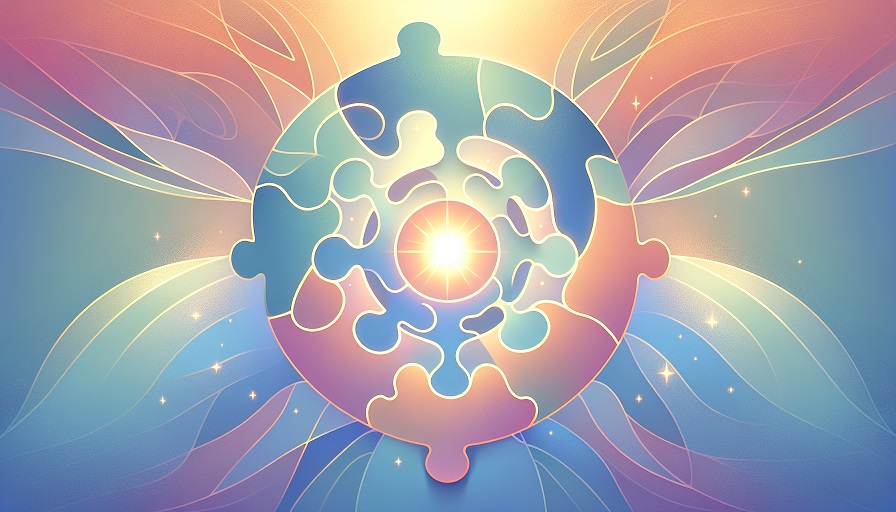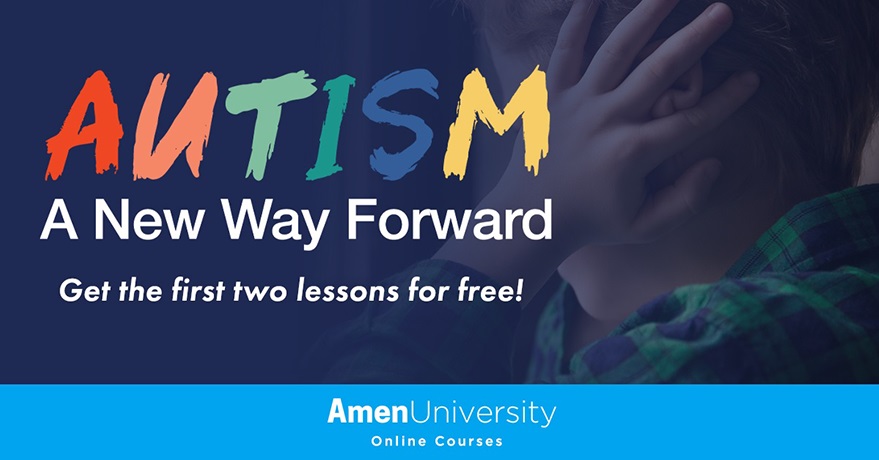
Families and professionals who care about autism are often pulled between two extremes. On one side are simple behavior charts that ignore biology. On the other are long lists of tests, supplements, and therapies that feel impossible to sort out. Dr Daniel Amen’s online course, Autism: A New Way Forward, aims to sit in the middle. It offers a structured way to think about the autistic brain, biology, and daily life without promising miracles.
The program combines about five and a half hours of teaching spread across roughly ten to eleven lessons. It is taught by Dr Daniel Amen, a psychiatrist known for his work with brain SPECT imaging, and Dr Jerry Kartzinel, a pediatrician and autism specialist. Together, they walk through autism biology, risk factors, lab work, nutrition, natural supports, and caregiver well being, always tying the science back to day to day challenges.
Contents
What Autism: A New Way Forward Is Designed To Offer
This course is not marketed as a cure. It is a teaching program that tries to give parents, caregivers, and interested professionals a clearer map of what may be driving certain behaviors and what practical steps they can test in real life.
Who The Course Is For
The material is written first for families who are supporting a child or adult on the spectrum, especially those who feel lost in conflicting advice. It is also relevant for clinicians, therapists, educators, and health coaches who want to understand how Amen style brain health concepts are applied to autism.
You do not need a medical degree to follow the lessons, but the course does discuss lab panels, genetic testing, and biomedical factors. For that reason, it repeatedly encourages working with a qualified healthcare provider when considering medical decisions, rather than trying to manage complex issues alone.
How The Training Is Organized
The content is delivered as short online video modules that you can watch at your own pace. The total run time is around six hours of teaching, divided into ten evidence based lessons and supporting materials. Each lesson tends to focus on one theme, such as root causes, the gut brain link, lab work, or caregiver resilience, and ends with practical ideas you can start using at home.
You also receive a certificate of completion at the end, which can be useful for tracking continuing education for some roles, even though it is not a formal clinical credential on its own.
The Brain Based Framework Behind The Course
At the heart of Autism: A New Way Forward is a brain first view of autism. Instead of seeing behavior as separate from biology, the course treats behavior as the visible output of underlying brain function, genetics, immune activity, and environment. That perspective shapes how each topic is presented.
From Behavior Only To Biology Plus Behavior
Traditional approaches to autism have often focused on what can be seen on the surface, such as meltdowns, scripting, rigid routines, or social difficulties. Amen and Kartzinel agree that behavior support matters. At the same time, they argue that it is just as important to ask, what in this person’s brain and body might be making regulation harder.
In practical terms, that means asking questions about gut issues, sleep quality, infections, nutrient status, toxin exposure, head injuries, and family genetics, and then seeing how those factors might relate to sensory overload, anxiety, or attention problems.
Seeing Autism As A Spectrum Of Patterns
The course also leans into the idea that autism spectrum disorder is exactly that, a spectrum. Two people can share the same diagnosis yet look very different in daily life. One may have strong language but big social blind spots. Another may have limited speech but deep strengths in visual thinking or memory.
Rather than treating everyone the same, the framework encourages you to notice patterns in communication, social understanding, sensory processing, motor skills, and emotional regulation. These patterns then help guide which supports to try first, instead of throwing every possible strategy at the problem.
Focusing On Root Factors, Not Just Labels
A central theme in the training is the idea of root causes and contributors. The course walks through biomedical factors that can interact with autism, such as gut inflammation, food sensitivities, immune problems, genetic variants, and environmental toxins. The message is not that these always cause autism, but that they can amplify difficulties when they are present.
By looking for and addressing these factors where appropriate, the aim is to reduce some of the load on the brain so that therapies, learning, and relationships have a better chance to take hold.
Key Topics The Lessons Cover
Across the ten or so lessons, several topics receive detailed attention. Each one connects back to the larger brain based framework.
How Autism Starts And Why It Matters
Early lessons review how autism is defined today, what current research suggests about brain development in autism, and how genetics and environment may interact. The instructors discuss why early brain development is so sensitive to nutrition, toxins, infections, and stress, and how this knowledge can inform both prevention and early support where possible.
The focus is on giving families context, not on blaming them for factors they often could not control. Understanding the biology is framed as a path to compassion and practical planning.
The Gut Brain Connection And Nutrition Strategies
One of the most detailed sections in the course looks at the gut brain link. Many autistic individuals have significant gastrointestinal symptoms, and there is growing research on how gut health relates to mood, behavior, and cognition. The instructors describe how diet patterns, the microbiome, and intestinal inflammation may affect the brain.
They also outline how to apply elimination diets in a structured way, when to involve medical supervision, and how to avoid turning food changes into a source of additional stress for a child or family.
Lab Testing, Genetics, And Biomedical Risk Factors
Another block of lessons focuses on lab panels and genetic testing. The course reviews common tests used in biomedical autism workups, such as nutrient levels, markers of inflammation or oxidative stress, and selected genetic markers. The goal is to help families and clinicians understand what these tests can and cannot tell you.
Rather than offering a one size fits all lab list, the training encourages thoughtful use of testing, guided by symptoms and history, and careful interpretation with qualified professionals.
Natural Protocols And Lifestyle Supports
From there, the course moves into natural and lifestyle strategies. That includes targeted supplements that are commonly discussed in autism circles, sleep routines, sensory friendly environments, movement, and stress reduction tools for both the autistic person and their caregivers.
The instructors repeatedly caution against trying everything at once. Instead, they suggest a stepwise, experimental approach so you can see what seems to help and what does not, while keeping safety and medical supervision in view.
Protecting Parents And Caregivers From Burnout
A final major theme is caregiver resilience. Raising or supporting a person on the spectrum can be demanding over many years. The course devotes specific time to recognizing caregiver burnout, building realistic support systems, and giving parents permission to care for their own brains and bodies as part of caring for their child.
This is not treated as an afterthought. The instructors are direct that exhausted caregivers have less capacity to implement any strategy, no matter how promising it looks on paper.
How Brain Imaging And Science Show Up In The Course
Because Dr Amen is known for using SPECT imaging at his clinics, imaging plays a visible role in the course. You see examples of scans from autistic individuals and learn how certain patterns of blood flow and activity may relate to common traits and challenges, such as sensory overload or repetitive behavior.
At the same time, the course does not insist that everyone must have a scan. Imaging is presented as one tool among several that can deepen understanding, especially in complex cases, rather than as a stand alone solution.
Scientific research is referenced throughout, especially in discussions of gut brain links, inflammation, and genetics. The emphasis is on practical application, using science as a guide while still paying attention to the individual in front of you.
Strengths, Limits, And Fit For Different Audiences
Like any structured program, Autism: A New Way Forward has both clear strengths and real limits. Seeing both sides helps you decide whether it matches your needs.
Where The Training Is Most Helpful
The course tends to be especially helpful for families and professionals who:
- Want a clearer overview of biological and lifestyle factors that can influence autism related challenges.
- Feel overwhelmed by scattered information and want a single, organized introduction.
- Are open to combining behavioral, medical, and natural strategies instead of relying on only one category.
- Appreciate a brain centered, compassionate view of behavior.
It also pairs well with ongoing work with a local clinician, since it can give families better questions to ask and more understanding of why certain autism treatments or tests are suggested.
Important Limits To Keep In Mind
This training does not replace individualized medical care, formal diagnosis, or evidence based therapies such as applied behavior analysis, speech therapy, or occupational therapy. It does not promise to reverse autism, and any program that does should be approached with caution.
Some of the biomedical ideas discussed in the autism world are still being debated and studied. The course encourages careful, supervised use of these strategies, but it is still wise for families to ask their own providers about risks, benefits, and evidence for each approach.
Getting The Most Value From The Course
If you decide to enroll, you can increase the practical value of Autism: A New Way Forward by treating it as a working manual rather than a one time lecture series.
- Keep a notebook while you watch, listing ideas that feel relevant to your situation.
- Discuss medical topics and lab suggestions with your healthcare team before making changes.
- Try only one or two new strategies at a time so you can see what makes a difference.
- Share brain based explanations with teachers, relatives, and others who interact with your autistic loved one.
- Use the caregiver burnout sections as a prompt to build more support into your own life.
Handled this way, Dr Amen’s autism training becomes more than a set of videos. It can become a framework for thinking about behavior and brain function together, so that your choices for testing, nutrition, therapies, and daily routines are guided by a clearer map.

